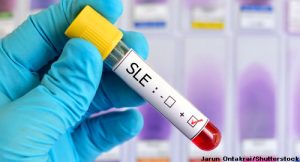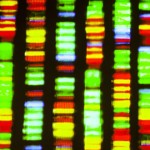 Rheumatologists seeking a more nuanced understanding of the pathophysiology of SLE are hindered by the lack of thorough, well-validated, gene expression meta-analysis. But a recently published transcriptome reveals underappreciated genes and pathways associated with the pathogenesis of SLE. The research by Winston A. Haynes, a graduate student at Stanford University School of Medicine, California, and colleagues has the potential to advance the state of clinical diagnosis, biomarker development and targeted therapeutics for SLE. The results were published online Feb. 27 in JCI Insight.1
Rheumatologists seeking a more nuanced understanding of the pathophysiology of SLE are hindered by the lack of thorough, well-validated, gene expression meta-analysis. But a recently published transcriptome reveals underappreciated genes and pathways associated with the pathogenesis of SLE. The research by Winston A. Haynes, a graduate student at Stanford University School of Medicine, California, and colleagues has the potential to advance the state of clinical diagnosis, biomarker development and targeted therapeutics for SLE. The results were published online Feb. 27 in JCI Insight.1
The investigators sought to perform a comprehensive, unbiased study of the molecular changes underlying SLE. They used a heterogeneous patient population to determine if, despite the heterogeneity, they could identify a common transcriptional signature underlying SLE. They performed an integrated multicohort analysis to identify a conserved gene signature.
The researchers identified 93 significantly differentially regulated genes (SLE MetaSignature) that are expressed differently in the blood of patients with SLE than in healthy controls.
The SLE MetaSignature was also capable of distinguishing SLE from other autoimmune, inflammatory and infectious diseases, and it correlated with SLE disease activity. Approximately half (47) of the genes have not been previously been associated with SLE. Of these 47, 14 are unrelated to type I interferon- or neutrophil-specific gene dysregulation, pathways that are traditionally associated with SLE pathophysiology. Members of the metallothionein gene family were also among the newly identified set associated with SLE
When the investigators performed a pathway analysis, they found dysregulation associated with nucleic acid biosynthesis and immunometabolism. They were also able to refine a neutropoiesis signature and highlight transcripts related to immune cells and oxidative stress. The researchers intend to use the full SLE MetaSignature to test blood and tissue derived from prospectively collected SLE cohorts to identify relationships between SLE flares, clinical subgroups and responses to newly tested therapies.
Lara C. Pullen, PhD, is a medical writer based in the Chicago area.
Reference
- Haynes WA, Haddon DJ, Diep VK, et al. Integrated, multicohort analysis reveals unified signature of systemic lupus erythematosus. JCI Insight. 2020 Feb 27;5(4):e122312.

